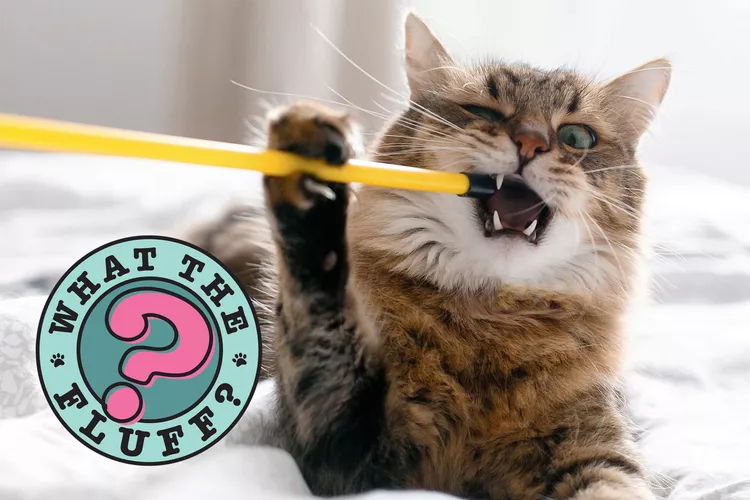Owners often hear their pet rustling in the next room while they’re busy with their own tasks. Upon finding out that their cat is chewing on bags, any owner would wonder how harmful it is. And why do cats eat plastic bags anyway?

Why Plastic?
Cats like it. Plastic bags stimulate various senses: the crunch of the plastic tickles a cat’s ears, the lingering smell of food that was previously in the bag teases the nose, and the smooth surface under their paws feels good to touch. For our little friends, this is a complete sensory experience.
Plastic bags are particularly appealing to pets because “many of them are coated with substances like cornstarch and stearates (salts of stearic acid) or are made from animal by-products, like gelatin, making them attractive to cats.” A cat sees a polyethylene bag and thinks, “Oh, look, a treat!”
Additionally, a feline might chew on bags and other firmer plastic items—like cocktail straws or rings from bottle caps—to alleviate unease caused by psychological or medical stress factors. This could be anything from moving to a new home and the introduction of a new pet or child to illness and aging.
Safety and Prevention
Animals and plastic bags are a potentially dangerous combination for several reasons. If a cat eats plastic, the foreign object can obstruct their airways or cause digestive upset. Moreover, during play, the handles of a bag can wrap around an animal’s neck, leading to suffocation.
The safest way to prevent such incidents is to always keep plastic bags out of pets’ reach. For instance, stow away unused bags in a cabinet, garage, or another area the cat can’t access.
Surprisingly, this won’t work if you use the bags to line trash cans or even cat litter trays. That being said, don’t fret about a cat wanting to chew a bag in its litter tray—most healthy cats don’t associate their litter box with a snack.
If you can’t keep your pet out of a room with a trash can, it’s best to get a can with a lid, under which the bag can be tucked. The cat won’t be able to chew on it if they can’t reach it. This rule applies to other hazardous “toys” too, such as electrical cords.
If you suspect that the behavior is not solely about sensory pleasure for the cat, schedule a visit to the vet. They can examine the cat and provide a comprehensive answer to why the cat chews on bags. The vet can rule out any disorders, like pica, where animals consume inedible objects like plastic, rubber, or fabric, as the College of Animal Behavior reports. Pica may also indicate more serious illnesses, like feline leukemia. Therefore, it’s crucial to have your feline checked by a veterinarian as soon as possible.
Alternatives to Plastic
You can divert a cat’s attention from polyethylene bags using a tactic of discreetly switching their focus. If you can’t remove the desired object from their reach, offer something even more intriguing.
For instance, provide sensory stimulation with toys—puzzles containing food or mazes with balls. Since a cat’s hunting instinct is potent, they’ll love soft cat toys they can chase around the house. Many pets also appreciate soft dog toys, which tend to be more durable than those for cats.
If your cat chews on plastic and cannot be distracted, create a special safe space for them to chew on cat treats or toys to their heart’s content. A dedicated cat garden is a fun and healthy alternative to the harmful and potentially dangerous plastic.
Cat owners can boldly add plastic consumption to the list of feline quirks. After all, it’s quirks like these that make these animals so endearing. Redirect the cat from such snacks, limit such behavior with safer alternatives, and consult a vet to understand the chewing habits of your fluffy beauty.
Leave feedback about this